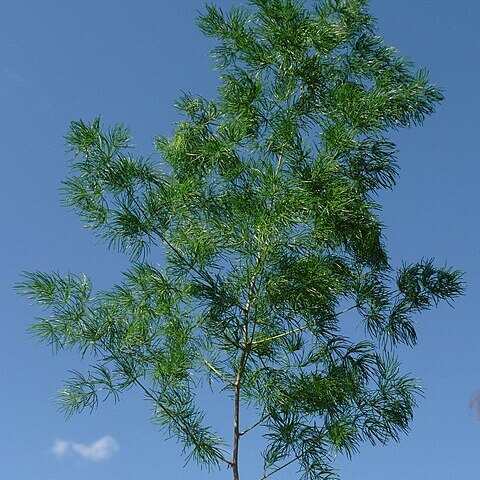Scrambler or tangled shrub, up to 3 m high. Stems hard, with strong, bare internodes and swollen nodes, branches grey, ribs ciliate when young, zigzagging. Spines short, recurved basally, reduced or absent above. Cladodes in dense, terminal, feathery fascicles, filiform, curved, pale to bright yellow-green, 10-30 mm long. Flowers 2-7 inside cladode fascicle; stamens with orange anthers; pedicels 5-40 mm long, articulated in lower half. Flowering time Jan.-Apr. Fruit a red berry.
Scrambling, spiny shrub, up to 3 m tall, stems and branches usually zigzagged, grey and ribbed when young, nodes widely spaced, usually swollen, epidermis not peeling, spines short, recurved. Cladodes in feathery fascicles, filiform. Flowers 2-7, clustered in axils, tepals and filaments spreading.
Scrambler, up to ± 3 m high or forming tangled shrubs, bearing dense terminal fascicles of bunched cladodes. Stems zigzag and usually whitish to pale grey. Cladodes filiform, ± 10-30 mm long, pale to bright yellow-green. Flowers white.
Scrambling spiny shrub to 3 m, stems grey and ribbed when young, with spreading spines. Cladodes in feathery fascicles, filiform. Flowers 2-7 in axils, tepals and filaments spreading.
A scrambling spiny shrub. It grows 3 m tall. The stems are zig-zag. There are 2-7 flowers in clusters in the axils of leaves. The fruit is a pink to red berry 1 mm across.

